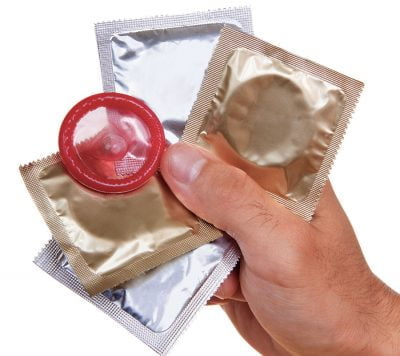Sexually Transmitted Infections (STIs)
Youth need information and services about sexually transmitted infections (STIs) because untreated infections can lead to serious health problems and increases risk for getting and spreading other infections, including HIV.4 Reducing stigma around STI testing, treatment and communication reduces barriers to accessing STI information and services.

STBBI rates are often higher in youth than the general population.
Rates are even higher in street-involved you who are more likely to engage in high risk behaviors like sex without a condom, sex with many partners, and the use of alcohol and drugs.1
For many of these youth, meeting the basic needs of life is more important than preventing possible health problems, so street-involved youth don’t always take the actions needed to prevent STIs and BBIs.2
What are STIs and BBIs?
Sexually transmitted infections (STIs) and blood-borne infections (BBIs) are infections, or sicknesses, that people can catch from someone who has that infection. Together, STIs and BBIs are sometimes called STBBIs.
Types of STBBIs
Sexually transmitted and blood born infections are caused by microscopic organisms entering the person’s body. Sometimes these infections are classified based on the type of organism causing the infection.
Parasitic
STIs caused by parasites (e.g. pubic lice/crabs, scabies, trichomoniasis) are usually easy to detect, treat and cure. Without treatment, they spread easily and cause uncomfortable symptoms like itchiness, rash and irritation.
Bacterial
STBBIs caused by bacteria (e.g. chlamydia, gonorrhea, syphilis) may not always have symptoms, but can be detected through STI testing. They can be cured with medication. Untreated bacterial STI can cause very serious health problems.
Viral
STBBIs caused by viruses (e.g. herpes, HPV, Hep B & C, HIV) may not always have symptoms. Some can be difficult to detect while others can be detected through testing. All can be treated; some cured; some can be prevented with vaccine. Some untreated viral STBBI can cause very serious health problems. HPV and herpes (HSV) are the most common STBBI.
For detailed information about specific STBBI, go to https://www.sexandu.ca/stis/
Testing and Treatment
All STBBI are treatable: most are curable. But, many people who have STBBI don’t know it because they don’t have symptoms.7 The only way to know for sure if someone has an STBBI is to get tested. Regular STBBI testing is an important part of staying healthy for people who are sexually active.
STI testing may be done by:
- urine sample
- blood draw
- swab
- visual exam
- skin or tissue sample
People can get STI testing at:
- their family doctor’s
- walk in clinic
- Sexual health clinic
- Teen clinic
- Sexually transmitted infection clinic

If someone is sexually active, it’s important to get STBBI testing:
- At least once a year
- Every 3 to 6 months if they have new partners or if their partners have other sex partners
- If there was sex without a condom or the condom broke
- If they or partners have symptoms
- If they are contacted by a health care provider to be tested
- If there was sex with someone known to have an STI.5
It’s also important to be tested for STBBI after sexual assault.
All STBBI can be treated. Untreated STBBI can cause very serious health problems. Treatment is generally free. If cost might be a concern, supportive adults can help youth advocate for access to free treatment programs.
- Treatment for STBBI may include medicine that is swallowed, put on the skin or injected by a health care provider or surgical or freezing treatments.
- Sometimes people need to be tested again after treatment to make sure the treatment worked.
- Sometimes people need to not have sex for a certain amount of time during or after treatment to make sure they don’t give the STI to someone else.
For more information, see https://myhealth.albertahealthservices.ca/sexual-reproductive-health/sexually-transmitted-infections
Prevention
There are risks and benefits to every activity, sex included. STBBI is a risk that comes with having sex. When provided with comprehensive information about a variety of ways to eliminate or lower the risk of STBBI, they’re more able to make choices to reduce their risk of STBBI in their specific situation.3
Abstinence
Abstinence means not doing something. When it comes to STBBI prevention, abstinence means not having sex – or more specifically, not having any contact with another person’s genital area, semen, pre-ejaculatory fluid, vaginal fluid, anal fluid, blood and breastmilk. This is the only way to eliminate the risk of STBBI. People abstaining from sex might choose lower risk forms of sexual activity such as mutual masturbation, sensual massage, video sex or phone/text sex.
For those who are sexually active, abstaining from vaginal, anal and rough sex can lower the risk of some STBBI. It also lowers the risk of STBBI infection if people abstain from sex:
- if partners have any STBBI symptoms
- until after all partners have finished STBBI treatment and the health care provider says it’s ok to have sex again
- until all partners have tested negative for STBBI
Vaccination
There are vaccines available to reduce the risk of HPV and Hepatitis B. In Alberta, these are part of the routine childhood vaccination program and are given in Grade 6.6 Adults can get these vaccinations, generally at a cost, through their health care provider at a cost – coverage may be available through private or group health insurance plans.
For information on HPV vaccination, see: https://myhealth.alberta.ca/Alberta/Pages/immunization-human-papillomavirus.aspx
For information on the Hep B vaccination, see: https://myhealth.alberta.ca/Alberta/Pages/immunization-hepatitis-b-vaccine.aspx
Avoid sharing sex toys.
If sharing sex toys, cover with a new condom before contact with another person. Clean sex toys according to the manufacturer instructions before each use.
Limit the number of sex partners.
Statistically, the lower the number of partners, the lower the risk of STBBI. It’s important to remember that even if a person only has one partner, if that person has STBBI, there is a risk of getting it.
Communication.
Communication with sex partners about sexual history, testing, treatment and STBBI protection can lower the risk of STBBI. This works best if the communication happens before sex starts.
Communication with health care providers about sexual and medical history and sexual practices can help the health care provider provide good care and information to lower the risk of STBBI transmission and can support early detection and treatment.
To learn more about healthy communication, click here.
Avoid contact with someone else’s blood.
It’s important for people to use their own separate drug works (needles, pipes, straws), toothbrushes and razors. If getting tattoos or piercings, choose licensed businesses that follow public health regulations and are regularly inspected.
Regular STBBI testing. Treatment if needed.
Consider PrEP
Pre-Exposure Prophylaxis is a medication that helps prevent HIV in people that are at high risk of getting it. It can be available for free for some people. People can get more information about PrEP and find out if it’s right for them and how to get it here: prepalberta.ca
Correct and consistent use of condoms and dental dams.
Condoms and Dental Dams
Condoms and dental dams offer very good protection from many STBBI. Condoms also offer protection from pregnancy. Condom use decreases with age.8 Becoming comfortable accessing, using and communicating about condoms and dental dams increases the chance that youth will continue to use them.
Condoms
Condoms are thin pouches or tubes that stop the penis and semen from coming in contact with another person’s body. Some condoms fit tightly to the penis. This type is usually just called ‘condom’, but are sometimes called ‘external’ or ‘male’ condom. Some condoms fit inside of the vagina and are held in place by the vaginal muscles. This type is called a ‘vaginal’, ‘internal’ or ‘female’ condom. Condoms come in a wide variety of condom styles, colors, features and materials.

Dental Dams
Dental dams are thin pieces of material that cover the vulva or anus during oral sex that stop the mouth from coming into contact with the other person’s body, vaginal fluid or rectal fluid. Pre-made dental dams are rectangular and are made from latex. People can make dental dams by cutting condoms or surgical gloves.
Supportive adults can increase the likelihood that youth will use condoms and dental dams by reducing barriers to use and addressing common reasons for hesitancy. Reasons youth may have for not using condoms and dental dams include:
-
-
- embarrassment
- being on birth control so thinking condoms aren’t needed
- not having one at the time
- a partner that doesn’t want to use them
- substance use impairing the ability to get or use them
- thinking they’re in a monogamous relationship so it’s not needed
- being in an abusive relationship
- not knowing how to negotiate condom use
- cost or lack of access
-
Talking with Partners about Using Protection
Communication is an important part of STBBI prevention. Talking about STBBIs with partners is easy for some, more challenging for others. Access to information and communication strategies can help youth have these conversations.
Some people are embarrassed to start a sexual conversation. Others are intimidated by their partner, feel they need to comply in order to “keep” a partner (or the peace), or simply believe the excuse a partner gives for not wanting to use condoms.
Strategies that can make talking about using protection easier:
-
-
-
- Set personal values and boundaries about condom use.
- Talk about your values, boundaries and protection before intimate activity begins
- Be willing to start the conversation
- Carry condoms
- Make sexual decisions when sober
- Be willing to walk away from the activity
- Have comebacks or suggestions ready for the most common reasons why people might resist using protection
-
-
Example Comebacks
Excuse: “I don’t have a condom.”
Comeback: “Don’t worry. I do!”
Excuse: “It takes away from the fun.”
Comeback: “We can use it as foreplay!”
Excuse: “It gets in between us and I want to be close to you.”
Comeback: “If we don’t use one, there’ll be even more space between us!”
Excuse: “My penis is too big for condoms.”
Comeback: “I can fit a condom over my hand and arm. If your penis is that big, we shouldn’t do this…”


